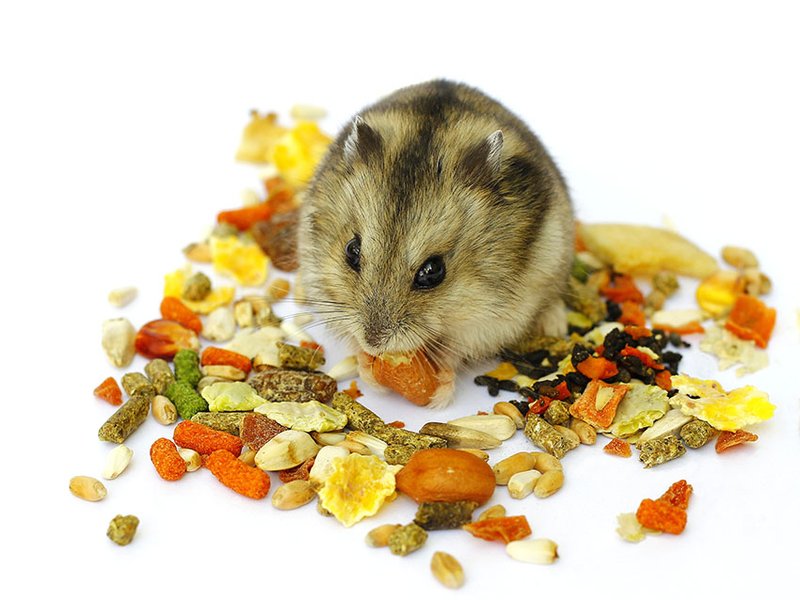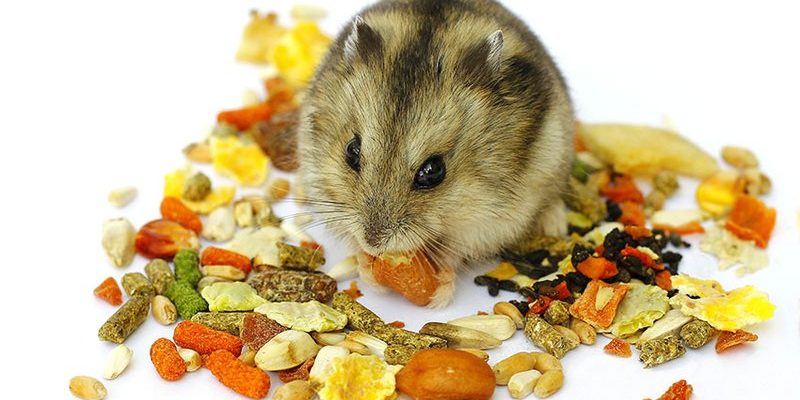
Hamsters are small, adorable rodents that require a specific diet to thrive. While it might seem tempting to give them just anything, a proper feeding schedule and diet tips can make a world of difference. In this article, I’ll break down everything you need to know about feeding your hamster, including what foods are best, how to avoid common mistakes, and tips to keep their little bellies happy.
Essential Foods for Hamsters
To create a balanced diet for your hamster, you’ll want to start with the basics. A high-quality hamster pellet food should be the core of their diet. These pellets are specially formulated to provide all the essential nutrients your little friend needs. Look for a brand that lists natural ingredients and avoids artificial additives—just like how you might check labels for your own meals!
But pellets are just the beginning. Hamsters also enjoy fresh fruits and vegetables. You can offer small pieces of carrots, broccoli, apples, or even leafy greens. Just remember to wash them thoroughly and cut them into tiny portions to avoid any choking hazards. You wouldn’t want to swallow a whole slice of pizza, would you?
Here’s a quick list of great options to include in your hamster’s diet:
- High-quality hamster pellets
- Fresh fruits (like apples and blueberries)
- Vegetables (like carrots and cucumbers)
- Timothy hay (for fiber)
- Occasional treats like sunflower seeds or nuts
What to Avoid Feeding Your Hamster
Feeding your hamster can be a bit of a minefield if you’re not careful. Here’s the thing: some foods that are perfectly safe for humans can be harmful to hamsters. For instance, you should never give your hamster citrus fruits, chocolate, or anything high in sugar. These can lead to serious health issues.
Also, avoid processed foods or snacks that might seem harmless, but are packed with additives and preservatives. Think of it like feeding a child candy for dinner—sure, they’ll enjoy it at first, but it’s not good for them! Just because your hamster might nibble at something doesn’t mean it should be a part of their diet.
Here’s a quick rundown of foods to steer clear of:
- Citrus fruits (like oranges and lemons)
- Chocolate and sugary treats
- Onions and garlic
- Processed snacks (like chips)
- Any food high in salt
Creating a Feeding Schedule
You might be wondering how often you should feed your hamster. Establishing a feeding schedule is important to ensure they’re getting the right amount of food. Typically, most hamsters do well with one serving of pellets in the evening, along with some fresh fruits and veggies. You want to feed them when they’re most active since hamsters are nocturnal creatures and prefer to eat at night.
Try to offer a small amount of fresh food every 2-3 days. Remember, any uneaten food should be removed after 24 hours to prevent spoilage—just like you wouldn’t leave leftovers in your fridge for too long. It’s all about keeping their space clean and their food fresh!
When it comes to treats, think of them as dessert. You wouldn’t have dessert before dinner every day, right? Limit treats to a couple of times a week to keep your hamster healthy.
Understanding Nutritional Needs
Just like how we need a balance of protein, carbs, and fats, hamsters require a specific ratio of nutrients. Pellets are a great start because they usually contain the right balance of protein, fat, and fiber. But how do you know if your hamster is getting enough of each?
Protein is essential for growth and muscle repair. Most hamster pellets contain around 16-20% protein, which is perfect for your little buddy. You can also add protein-rich treats like mealworms or boiled eggs (in moderation) to their diet.
Fats are also important, but they should make up about 5-10% of your hamster’s diet. Think healthy fats from seeds or nuts, but remember the key word is moderation. Too much fat can lead to obesity.
Fiber is crucial for digestive health and should be around 15-20% of their diet. Timothy hay is great for providing that extra fiber boost!
Hydration is Key
Just like you can’t go without water, your hamster needs hydration too. A fresh supply of clean water should always be available—preferably in a bottle with a sipper tube to keep it clean and reduce spills. Hamsters are notorious for making a mess, so keeping their drink contained can save you a cleanup!
You might think, “How much water do they actually drink?” Hamsters don’t drink a lot—typically about 10-20 milliliters per day. However, if you notice your hamster isn’t drinking much at all, it could be a sign of health issues, and you should consult a vet.
Also, remember that fresh fruits and veggies can contribute to their water intake. Cucumber, for example, is about 95% water!
Tips for a Happy Hamster Diet
Feeding your hamster isn’t just about the right foods; it’s also about making mealtime fun! You might consider varied offerings or even creating a little foraging area in their habitat. Hide tiny food pieces in their bedding or toys, and let them dig and search—it’s a natural behavior that keeps them mentally stimulated.
Don’t forget to watch your hamster as they eat. It’s a great way to learn their preferences. Some hamsters may absolutely love a particular vegetable while others may ignore it completely. Think of it as getting to know your little friend better!
Lastly, when introducing new foods, do it gradually. Sudden changes in diet can upset their tummy. A good rule of thumb is to introduce one new food item at a time, and wait a few days to see how they handle it before adding more.
Feeding your hamster can be a delightful experience if you take the time to understand their needs. By focusing on a well-balanced diet, creating a consistent feeding schedule, and making mealtime enjoyable, you’re setting the foundation for a healthy, happy hamster. Just like your own meals, diversity and moderation are key.
Remember to keep an eye on what they like and don’t like, treat them occasionally, and be cautious with what you offer. With these tips in hand, you can ensure your furry friend thrives—one happy nibble at a time!

